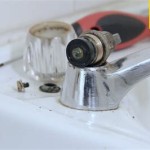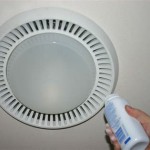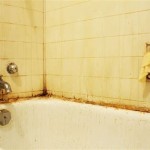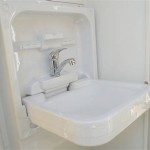Can Mold Grow On Bathroom Tiles?
Bathrooms are notorious for harboring mold due to their humid and warm environments, which are ideal for mold growth. While mold can grow on various surfaces, including bathroom tiles, the likelihood of mold growth depends on several factors, such as the type of tile, grout, and ventilation. This article explores the conditions that promote mold growth on bathroom tiles and provides insights into preventing and addressing this issue.
Understanding Mold Growth on Bathroom Tiles
Mold thrives in damp and humid environments, making bathrooms susceptible to mold growth. When water spills, splashes, or leaks occur, moisture can seep into the grout between tiles, creating a favorable environment for mold spores to germinate and multiply. Additionally, inadequate ventilation contributes to moisture buildup, further encouraging mold growth. Mold can also develop on the surface of tiles, especially if they are porous or have a rough texture that can trap moisture.
Factors Contributing to Mold Growth
Several factors contribute to mold growth on bathroom tiles, including:
- Poor Ventilation: Insufficient ventilation allows moisture to accumulate, creating a breeding ground for mold.
- Water Leaks: Leaky faucets, showerheads, or pipes can create constant moisture, leading to mold growth.
- Porous Tiles: Some tiles, especially those made from natural materials like stone or ceramic, are more porous and can absorb moisture, making them prone to mold growth.
- Grout: Grout, the material used to seal the gaps between tiles, can be porous and absorb moisture, promoting mold growth.
- High Humidity: Bathrooms naturally have higher humidity levels due to showering and bathing, making them prone to mold growth.
Preventing Mold Growth on Bathroom Tiles
Preventing mold growth on bathroom tiles is essential for maintaining a healthy and hygienic bathroom environment. Here are some effective preventive measures:
- Improve Ventilation: Ensure proper ventilation by using exhaust fans during and after showering or bathing. Open windows whenever possible to allow fresh air circulation.
- Address Water Leaks: Promptly repair leaky faucets, showerheads, or pipes to prevent continuous moisture buildup.
- Dry Surfaces: Wipe down shower walls, floors, and tiles after every use to prevent moisture accumulation.
- Use Waterproof Sealers: Apply waterproof sealants to grout and tile surfaces to prevent moisture penetration.
- Choose Non-Porous Tiles: Opt for non-porous tile materials like glazed ceramic or porcelain tiles, which are less likely to absorb moisture.
- Clean Regularly: Clean bathroom surfaces regularly with mild detergent and water to remove mold spores and prevent their growth.
Addressing Existing Mold
If mold has already grown on bathroom tiles, it is crucial to address it promptly. Here are steps for removing mold from bathroom tiles:
- Identify the Source: Determine the source of moisture that is contributing to mold growth and address it accordingly.
- Ventilation: Ensure adequate ventilation to prevent mold spores from spreading during cleaning.
- Protective Gear: Wear gloves, a mask, and eye protection when cleaning mold to prevent exposure.
- Mold Removal Solution: Use a bleach-based solution or a commercial mold remover to clean affected areas.
- Scrub and Rinse: Scrub the mold-affected areas thoroughly with a brush and rinse with water.
- Drying: Allow the cleaned areas to dry completely.
- Prevention: Implement preventive measures to avoid future mold growth.
It is important to note that mold removal can be challenging, especially in cases of extensive growth. Professional mold remediation services may be necessary to address severe mold infestations.

How To Tell If There Is Mold Behind Shower Tiles Nationwide Restorations

What Do About Black Mold In The Bathroom Bob Vila

Mold In The Shower Causes How To Clean It Environix

The Top 4 Causes Of Bathroom Mould How To Get Rid It

Ways To Prevent Mold In Bathrooms Forbes Home

Black Mold In The Shower Here S How To Remove It Help For You

How To Know You Have Mold Growing Behind A Bathroom S Drywall

Is Black Mould In The Bathroom Dangerous Dbs Bathrooms

Why Is There Mold On My Bathroom A J Property Restoration Dk

Mold In The Shower Causes How To Clean It Environix
Related Posts







